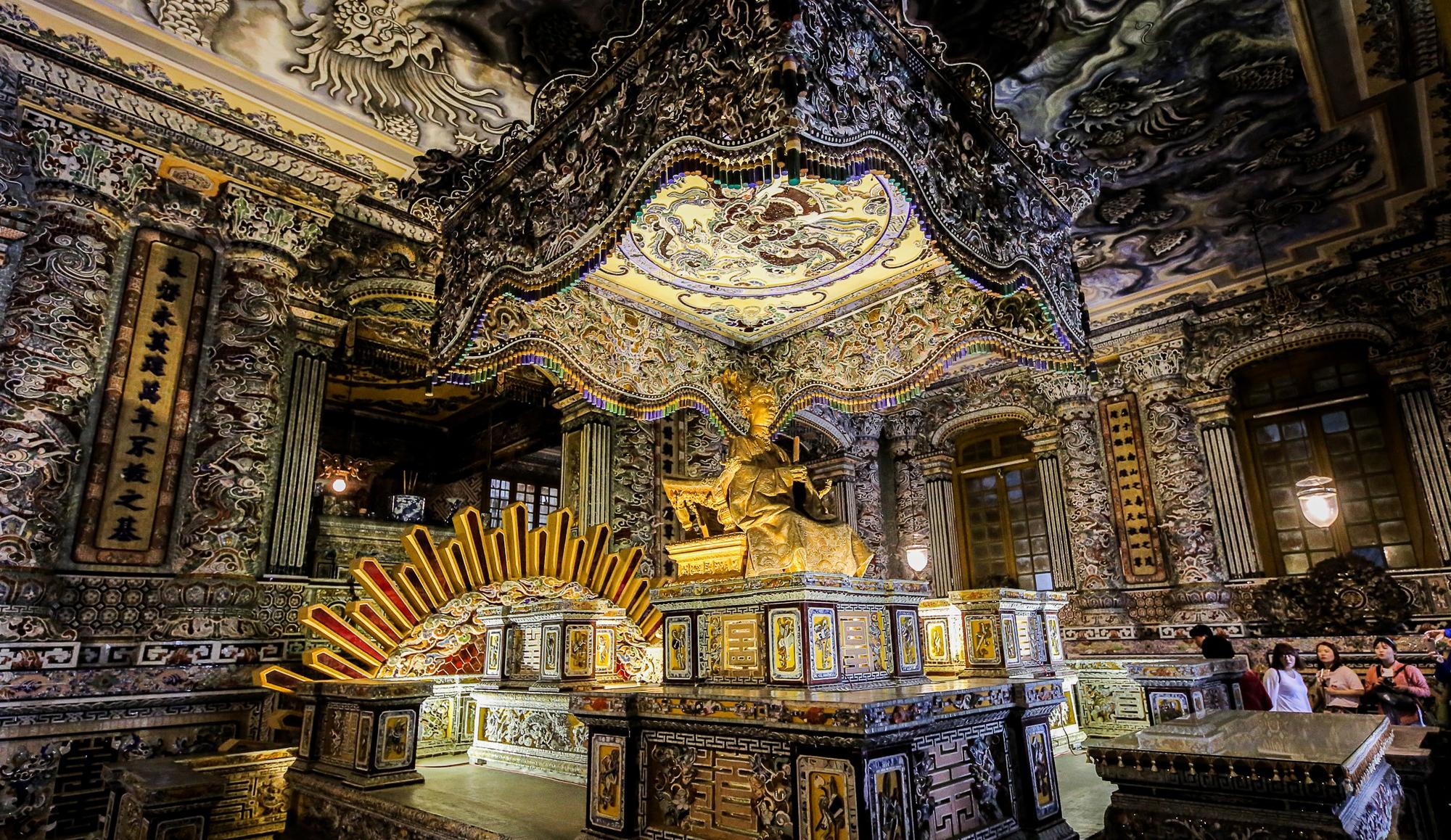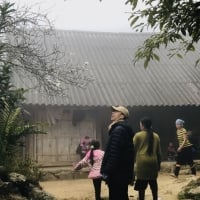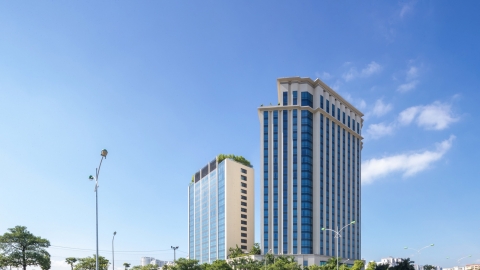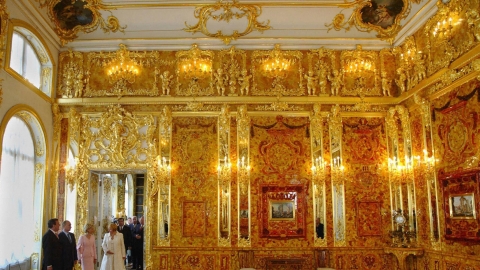Nguyen Dynasty mausoleums
The Nguyen Dynasty had a tradition of building their own tombs while they were still alive. The mandarins in the court, from the Imperial Astronomical Institute to the Ministry of Rites and the Ministry of Public Works, were all mobilized to find land where mountains and rivers converged, continuing the dragon vein.
The system of mausoleums in Hue has cultural, historical and architectural significance overlapping each other, solemn and majestic, with ups and downs and political turmoil. Therefore, after 13 kings, up to now, Hue only preserves 7 mausoleums: Gia Long Mausoleum (Thien Thu Lang), Minh Mang (Hieu Lang), Thieu Tri (Xuong Lang), Tu Duc (Khiem Lang), Duc Duc (An Lang), Dong Khanh (Tu Lang) and Khai Dinh (Ung Lang).
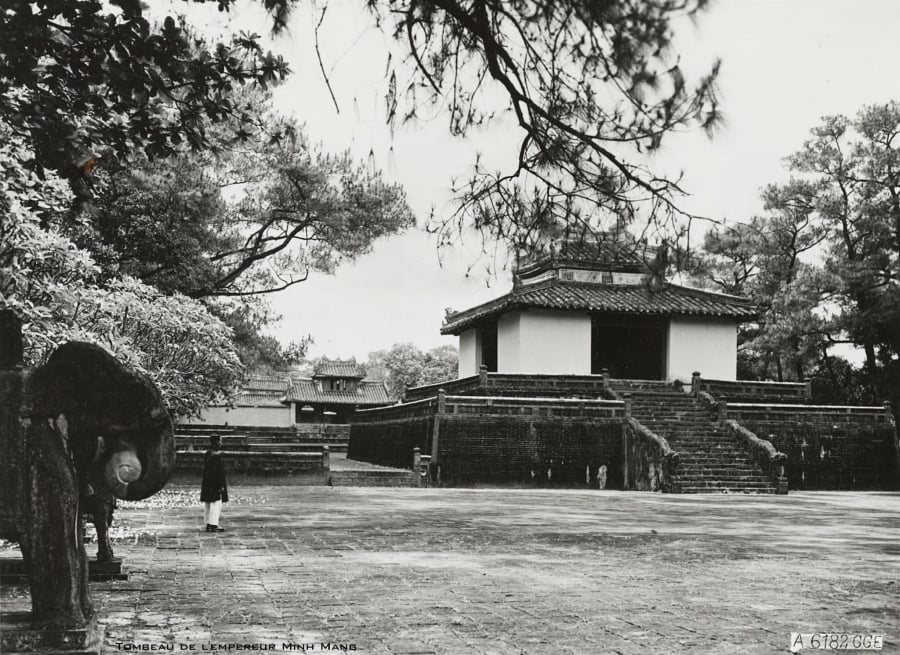
Minh Mang Tomb.
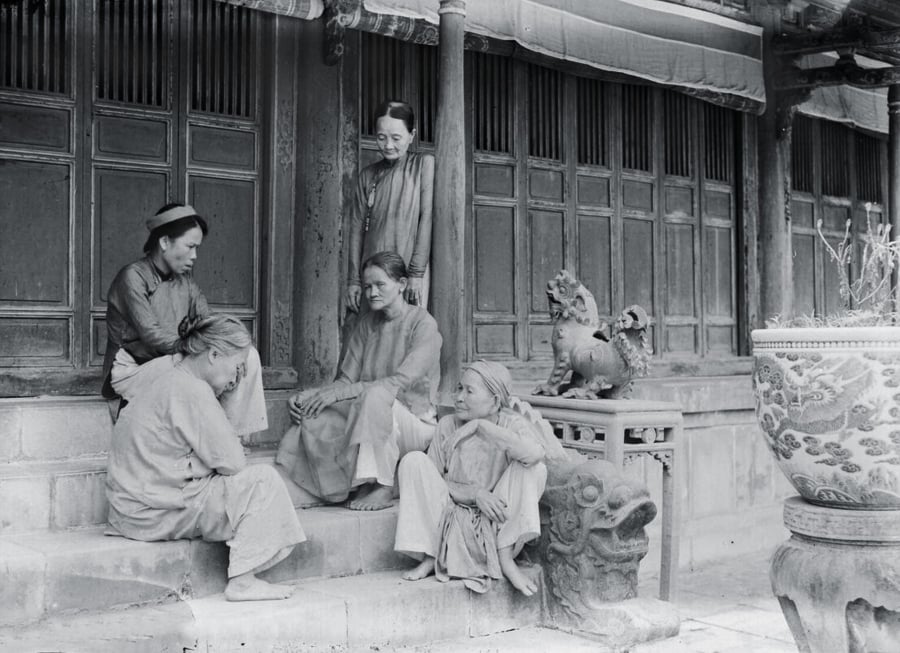
"The keepers of the mausoleum" early 20th century.
The architecture of each tomb partly reveals the king's personality and character. King Gia Long was contemplative and open-minded, so he chose to build his tomb far from the capital, surrounded by trees. King Minh Mang was upright and stern, so the structure of his tomb was built symmetrically along the central axis of the Divine Way. King Tu Duc was gentle and forgiving, so he chose to build his tomb next to a large lake, in a narrow valley, etc. King Khai Dinh was extravagant, so his tomb was also likened to a "golden cage".

The lavish scene inside Ung Lang mausoleum.
Ung Lang - the last and most unique work of the Nguyen Dynasty
Khai Dinh Tomb (or Ung Lang) has an area of about 1 hectare, the smallest compared to the remaining mausoleum system, but this is also the longest and most expensive construction. Later generations even excluded Khai Dinh Tomb from the traditional architectural categories of the Nguyen Dynasty because of its uniqueness, arrogance and the feeling of "lostness" it brings.
Ung Lang was completed by King Bao Dai, 6 years after King Khai Dinh passed away. This is also the last architectural work of the Nguyen Dynasty. During his lifetime, King Khai Dinh was very fond of foreign things. The materials used to build the mausoleum were iron, steel, cement, Ardoise tiles, etc., imported from France. The mausoleum as a whole is a harmonious combination of East - West, classical - modern, most noticeable are the octagonal columns, high and wide arches of Roman Gothic architecture and the cylindrical tower gate with Indian influences.
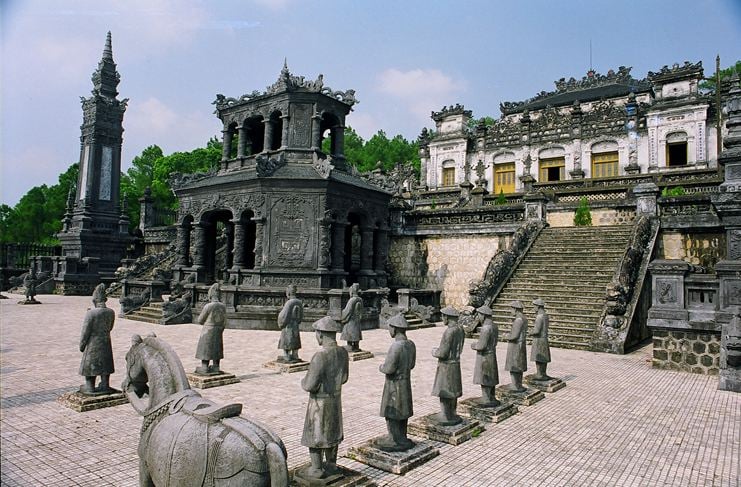
Gothic architecture harmonizes when placed next to stoupas and other Asian architectural icons.

The yard has statues of civil and military mandarins, elephants and horses attending the king.
An Dinh Palace - the pinnacle of architectural art
The pinnacle of the art of construction and decoration of Ung Lang is Thien Dinh Palace. To this day, visitors are still amazed by the mosaic reliefs of porcelain and glass covering the three central rooms of the palace. All the porcelain and glass were imported from China and Japan.

The art of glass mosaic reaches its peak.
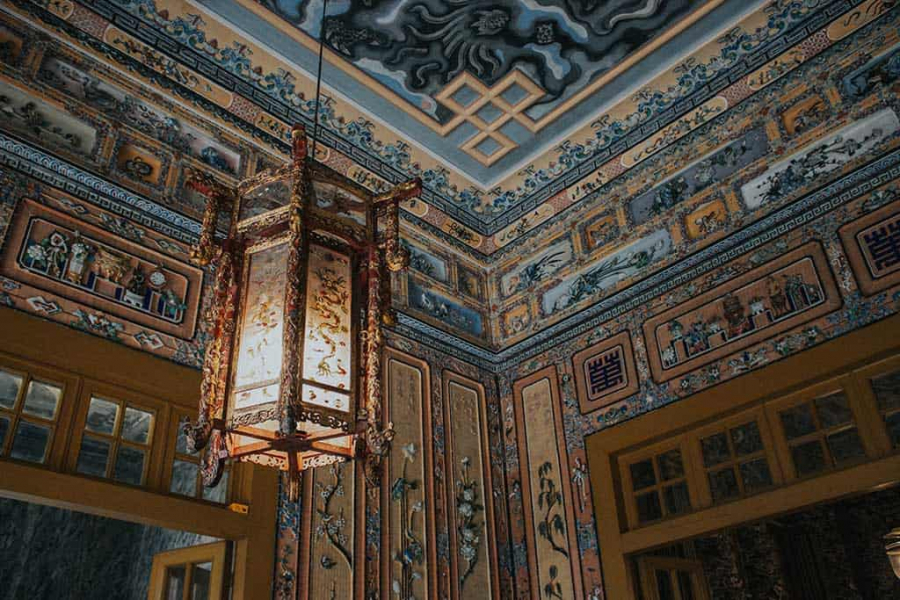
The art of glass mosaic reaches its peak.

The art of glass mosaic reaches its peak.
On the ceiling of the three middle rooms are three paintings of “Nine dragons hidden in the clouds” made by Phan Van Tanh, the most famous artist in Vietnam at that time. Until now, art researchers still wonder a lot about Phan Van Tanh’s painting technique, not knowing how he managed to create such a large-scale mural, after nearly a hundred years, but it still looks like it was just painted, the ink strokes are bold and sharp, the dragons winding in the clouds have a soul as if they are about to fly to the sky. Together with three porcelain reliefs, the three murals of “Nine dragons hidden in the clouds” create a sublime artistic rubik’s cube with perfect beauty.

The painting "Nine dragons hidden in clouds".

The 1:1 bronze statue was cast in France by the king and brought back to Vietnam, gilded. About 9 meters below the statue is the king's burial place.
Regarding the story of Phan Van Tanh painting, the folk still spread the following anecdote: One time, when King Khai Dinh came to see, everyone stopped working to welcome the king, but Phan Van Tanh was still engrossed in painting on the ceiling. King Khai Dinh thought that he did not respect him, even the dragon representing the king's authority was painted by his feet. The king was angry and called Phan Van Tanh down to question him. Phan Van Tanh then slid down and explained to the king: "The reason I did not come down to welcome the king was because I was afraid that it would take too much time and the project would not be completed within the deadline the king had given. The second reason I had to paint with my feet, because if I painted the paintings on the ceiling by hand, the distance from my hand to my eye would be very close, and to see the light and dark of such a large-scale painting, I had to paint with my feet. I had to look from afar to see clearly." After hearing the worker's reasons, although angry, the king had no reason to blame him. Khai Dinh turned back and said to Mr. Tanh: "If Vietnam had two Phan Van Tanhs like you, I would cut off your head."
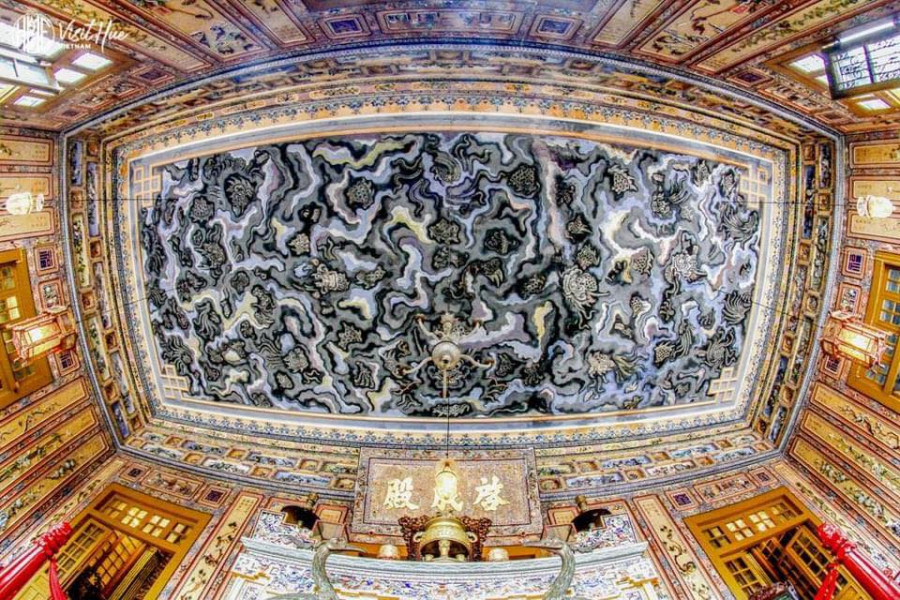
"Nine Dragons Hidden in Clouds" after nearly 100 years still appears sharp and vivid.
More information
King Khai Dinh's birth name was Nguyen Phuc Buu Dao, the eldest son of King Dong Khanh. On May 18, 1916, Buu Dao ascended the throne and took the reign name Khai Dinh. In 1925, King Khai Dinh died, and his only son, Nguyen Phuc Vinh Thuy (King Bao Dai), succeeded him.
Khai Dinh Tomb is located on the slope of Chau Chu mountain (also known as Chau E), now in Thuy Bang commune, Huong Thuy town, 10 km from Hue city center.
Mausoleum entrance ticket: 150,000 VND/person






